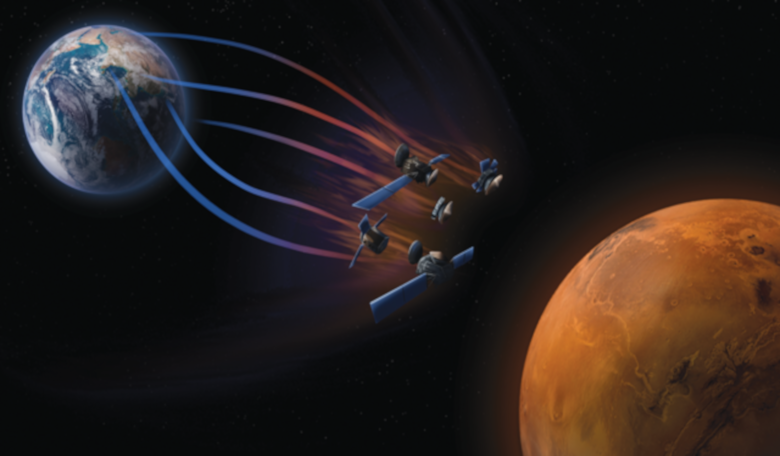As we ring in a new year and the start of a new decade, its safe to say that 2019 was another phenomenal year for space exploration and astronomical discoveries. The race to the Moon, in one way or another, dominated the headlines throughout the year; India and SpaceIL and Israel Aerospace Industries (IAI) both strove to place their first lander on the Moon, but were met with disappointment, while others made history by being the first to land on its far side.
Just as Chang’e 4 kick started the fourth phase of China's lunar exploration program, the nation laid out its plans for future Moon endeavours, and announced which science projects had been selected to take place on its space station when it becomes operational sometime from 2022 onwards.
Meanwhile the US laid out its plans for the future; the development of a space force, and a rebranding of its next Moon mission which the country hopes to achieve in 2024; Artemis. Since then however, the programme has been regularly blighted with reports of delays after delays. So too has its intended Mars mission.
On a more positive note, both SpaceX and Boeing got their respective NASA financed Commercial Crew Program space transportation modules off the ground, Crew Dragon and Orion. Though one fared better than other in their maiden flight tests.
In preparation for a journey to the Moon, Russia locked away six cosmonauts as part of a test to simulate the effects of extended stays in space and sent a humanoid AI robot called Skybot F-850 to the ISS for testing its abilities as a ‘crew assistant.’
But the Moon itself also threw up a few surprises. Aside from finding the oldest Earth rocks ever to be discovered on its surface, a mysterious mass was found under its South Pole
Along with the Moon, Mars, Ryugu, FarFarOut, Ultima Thule (now renamed Arrokoth after a controversy over the old name's Nazi connections) and our second interstellar visitor made the news. ESA's planet watching telescope finally took to the skies
The presence, or absence of water, methane and oxygen on our nearest planetary neighbour is still a point of debate and like the Moon, organisations and agencies are lining up to take a closer look for themselves as to what the Red Planet has to offer and whether it could be made habitable or not.
And, when these missions finally get to where they are going, all kinds of technological devices will be on hand to help explore our Solar System, such as drones, lasers, wafercrafts, Marscopters, steam-powered hoppers, lightsails, underwater robots, and a spiderbot!
2019 also marked the 50th anniversary of the first humans to step onto the Moon. So what can we expect in 2020?
One of the first to leave the planet will be the Solar Orbiter, a joint mission between NASA and the European Space Agency, that is scheduled to lift off from Cape Canaveral Air Force Station in Florida on 5 February. The mission of the Solar Orbiter is complementary to the Parker Solar Probe which is already in orbit and will make the third Venus flyby (of seven) on 11 July this year as it continues to make close passes of the Sun. Next up is the Indian Space Research Organization’s Aditya 1 solar mission, slated for mid-2020.
Four nations have plans to send rovers or orbiters to the Red Planet this year all around the middle of the year, including NASA's Mars 2020 which is aiming for a mid-July launch. The European Space Agency (ESA) also plans to launch the Rosalind Franklin rover (named after the 20th-century DNA pioneer) on 25th July, although cost overruns and a catastrophic parachute failure during recent testing means that the mission only has a 50/50 chance of making the 2020 launch window.
Also in late July, China has plans to send its Mars Global Sensing Remote Orbiter Huoxing-1 (HX-1) and its lander on its Mars mission and the United Arab Emirates may also launch its Mars Hope orbiter.
SpaceX will continue to launch its controversial Starlink mega-constellation and its Crewed Dragon capsule is set to send a human crew to the International Space Station in the coming year, if all goes according to plan.
Last but not least, the Hayabusa 2 asteroid sample return will be heading to Earth in December over the Woomera Test Range site in Australia to deliver its cargo of pristine material leftover from the creation of the Solar System, that until earlier last year had not seen the light of day for billions of years.











